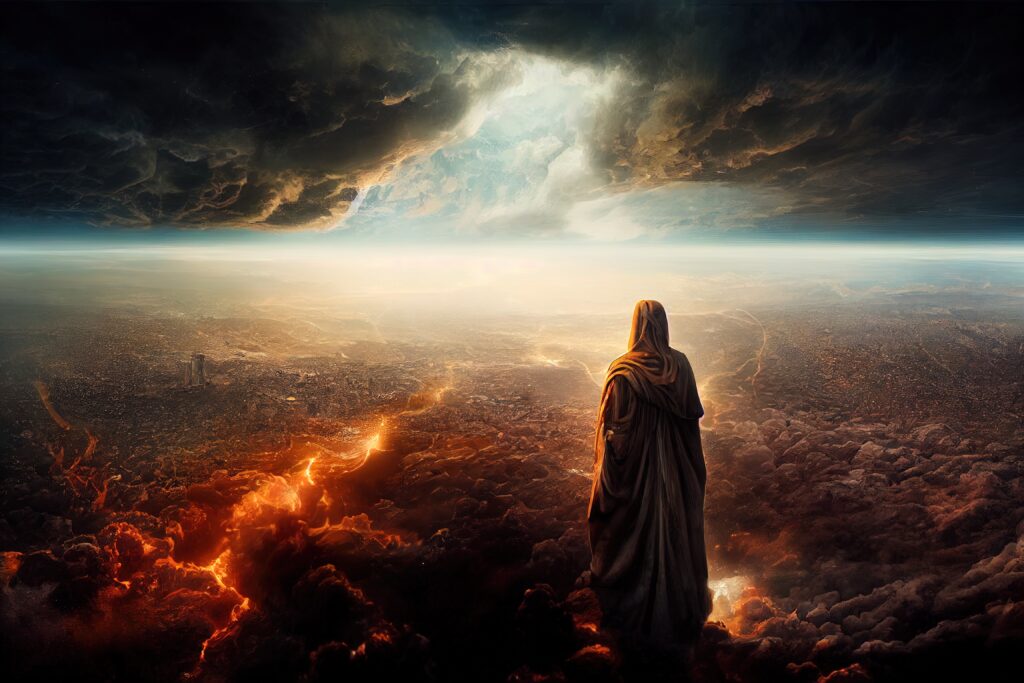
Literal or Symbolic?
“Then I saw a new heaven and a new earth; for the first heaven and the first earth passed away, and there is no longer any sea. And I saw the holy city, new Jerusalem, coming down out of heaven from God, prepared as a bride adorned for her husband. And I heard a loud voice from the throne, saying, “Behold, the tabernacle of God is among the people, and He will dwell among them, and they shall be His people, and God Himself will be among them.” – Revelation 21:1-3 NASB
As we shall see, the city is described in the vision as a cube in it dimensions (21:16-17). A cube is an ancient symbol of perfection, but more importantly we must remember the use of the Hebrew sanctuary in Revelation. Yahweh instructed the Most Holy Place to be constructed in the dimensions of a cube. The Most Holy Place was where the Shekinah glory of God’s presence dwelt. So, first and foremost, this city is described in the language of the Most Holy Place.
There is also a symbolic connection between the stones in the wall of New Jerusalem and those on the breastplate of the high priest who served in the Old Testament Most Holy Place. The 12 stones listed for both the wall and the priest’s breastplate, jasper, sapphire, chalcedony, emerald, sardonyx, sardius, chrysolite, beryl, topaz, chrysoprase, jacinth, and amethyst, share a symbolic significance related to the 12 tribes of Israel. So not only does the city represent the sanctuaries most Holy Place but the walls symbolize the High Priest. Remember in Chapter one Jesus had been seen by John walking among the candle sticks of the sanctuary, dressed as the High Priest and surrounded in the Old Testament Language of the Ancient of days. So now the city should be seen by us to represent the Most Holy Place, and the High Priest. The 12 apostles also get mentioned in the foundations. We should remind ourselves that revelation uses symbolic language to describe things that are literal.
For this reason, I do not ascribe to the idea of taking the dimensions and measurements as literal.
Another important aspect of Revelation 21:3 is the word “Tabernacle”. The Greek word for “tabernacle” is skēnē. It translates to “tent” or “dwelling”. The verb form skēnoō means “to dwell” or “to tabernacle,” further reinforcing the concept of a dwelling place or encampment. The word is often used in the Greek translation of the Old Testament (the Septuagint) to describe the tabernacle. Yahweh tabernacled with Israel in the wilderness in The Most Hole Place of the Sanctuary as the Shekinah Glory. This symbolism was transferred by Solomon in his temple design.
The ‘tabernacle’ language was picked up by John in his opening chapter in v14 where he uses the word skenosev for Jesus ‘tabernacling’ or dwelling among us. Here again was the Shekinah Glory dwelling with men, this time in human flesh. Luke dates the birth of Christ not to December but to October which was the time of the feast of Tabernacles, which fits the typology. The time which commemorated, as one of the shadow Sabbaths, when God dwelt with them. In John 7 and 8 Jesus went to the Feast of Tabernacles in Jerusalem, and on His birthday, He took all the symbols of the festival to himself. “The light of the world” 8:12, “the water of life” 7:37 and “the manna from heaven” 6:48. Everything about this new city is about Jesus.
The city and the life within it are described in the vision through the use of precious stones, gold, pearls, water and trees – a real model of the plan of salvation and its central figure. It is also a declaration of His love, as revealed to His people. Just as the sanctuary and its services foreshadowed the plan of salvation, so every aspect of this city is a revelation of Jesus Christ and His impact on humankind – a metaphor for the plan of salvation completed.
Let us notice the symbols from the sanctuary used here. To Christians who throughout time have suffered excruciating and debilitating persecution, this vision offers the realisation of the promises of Isaiah 65 and Ezekiel 40-48. In addition, it emphatically confirms the eradication of the curse and the fulfilment of the promise of Genesis 3. It is an incredibly exciting and much-valued vision. The symbols used are both amazing and wonderfully comforting to Jesus’ suffering people as they pull together all the themes of this book and, in fact, from all scripture. They do this in a brilliant rebuilding of what sin has destroyed. The work of Creation we see outlined in Genesis’ opening chapters and shattered by sin in the trumpet scenes in Revelation 8 and 9 is here rebuilt, and the parallels are beautiful.

Ross God bless you and Jesse for sharing Revelation with us i can’t wait to see Jesus
Me too!
I love this Ross. This is the most beautiful interpretation of the New Jerusalem I’ve ever seen. Thank you
Thank you Linda! 🙂